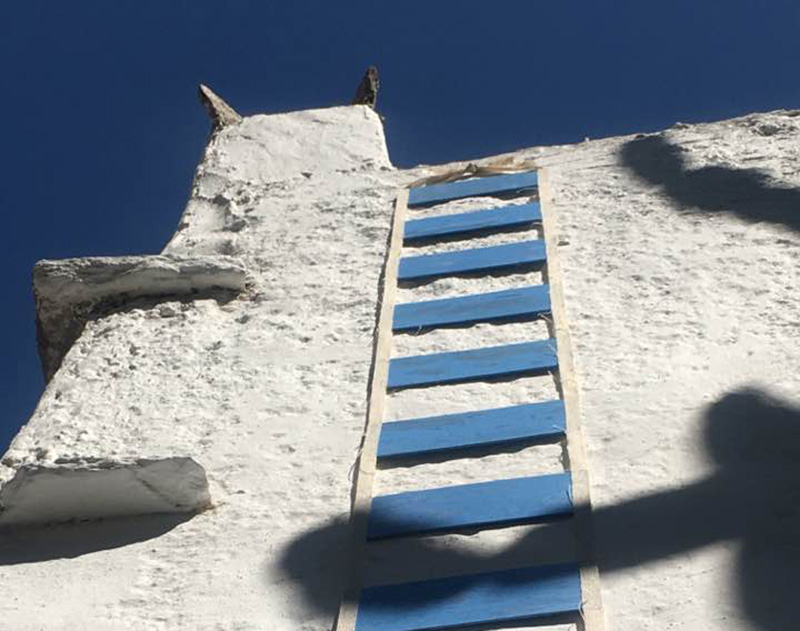MIRAGES XL

The other side of Mykonos Island: Mykonos is one of the most misunderstood Greek islands because it is interwoven with nightlife, binge drinking and especially with the gay community. The island visitors are fluctuating widely through time, from Shahbanu Soraya of Iran and Elizabeth Taylor in the past to the rich Indians, Arabs and Brazilians today. No, it is not like Ibiza which is beautiful, it is not Cote d’Azur which is the precious desire of all nor Capri or the dreamy Portofino, it is just a dry Cycladic island with magical energy, “God, how much blue did you need to hide?” I wonder gazing towards the breathtaking Delos Island. I rediscovered and loved again the island through the First Mykonos Biennale in 2013 with Lydia Venieri’s help, a friend of mine and artist, who lives and works in New York for 20 years. Venieri, year after year, Biennale-Biennale, builds as a single project the image of an island that exists and breathes in a parallel universe. This image evolves in time through history, people and place (the tsabouna*, the windmills, the vineyards) weaving the image of life at this edge of the earth, where Contemporary Art spreads as a natural consequence of the place and the landscape. Trans Allegoria is the reality itself, as the artist explains in the interview that will follow this month.
The other side of Salamis Island: It is Salamis of the visual artist Angelos Skourtis, that through his performance and poetry, will unite ancient and contemporary Salamis at the Fighters Tomb of the Naval Battle of Salamis in Kynosoura peninsula, as an epilogue of the summer, completing the cycle “Locus-Recollection-Landscape”, that is organized by our magazine, starting from July the activation of the archaeological sites of the island through contemporary art and life.
Many of the exhibitions are opening in September, as it is the beginning of the visual arts year, we will watch them day by day…
Traces: John Cage, Dennis Oppenheim, Christian Boltanski, So LeWitt, Lucas Samaras, Carl Andre, Mark Rothko and Ilya Kabakov.
Architecture: Kenzo Tange, Fuhimiko Maki, Tadao Ando and Renzo Piano.
Good Month(!)
Efi Michalarou
10/9/17
* Bagpipe has been used by the Greeks since ancient times. Today there are three types of bagpipes surviving in Greece: the tsabouna which is played on the Greek islands of the Aegean and Crete, the gaida which is played on mainland Greece, and the askavlos played by the Greeks of Pontus, in the black Sea region of Asia Minor. The tsabouna differs from the mainland bagpipe (or gaida) in that it does not have a separate, low-toned drone pipe.
